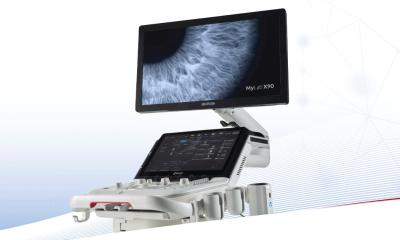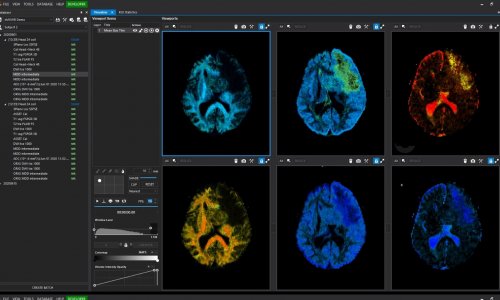Article • New
The ESR iGuide
Electronic radiology clinical decision support (CDS) systems, designed to help doctors order the most appropriate imaging examinations for patients, offer a way to practice better medicine, to reduce the costs of radiology and help increase patient safety by preventing radiation exposure from inappropriate or unnecessary exams.
Report: Cynthia E Keen

CDS technology has existed for years. Evidence-based guidelines from the American College of Radiology (ACR) and the ESR have been recommended for decades. Electronic medical record (EMR) systems, with the capability for ordering diagnostic tests that CDS systems interface with, are in use in many hospitals. The challenges that exist are adoption, trust, utilisation and proof of improved results.
Physicians and hospital administrators recognise the importance and value of radiology CDS systems as imaging becomes more complex and increasingly relied upon for its diagnostic capabilities.
Early adopters, such as Massachusetts General Hospital in Boston, which first started to use the technology in 2001, have documented impressive, tangible benefits. But medical practice is a highly individual profession. The symptoms and conditions of patients are often unique and not uniform. Even though USA federal legislation mandates the use of CDS when ordering advanced imaging exams for Medicare patients before the end of this decade, adoption by American hospitals has been slow. Longstanding methods of patient management that do not include the use of appropriateness criteria, the need for customisation for a specific hospital’s needs, and the overall complexities of medicine have created barriers. Some are real, some imagined. All need to be overcome.
For several years, the ESR has worked to establish a foundation for Europe-wide CDS implementation. After announcing a partnership with the ACR and its commercial CDS partner, the National Decision Support Company (NDSC) at ECR 2014, the ESR began to work on developing appropriateness guidelines for European harmonisation.
First, the ESR conducted a full review of the ACR appropriateness criteria following a scientific method. It adapted these criteria to European practice standards and the latest evidence available. Content was divided into nine categories, largely corresponding to body areas. The ESR’s CDS Committee conducted rounds of content reviews with specialist members. ESR discussed the changes members recommended with the ACR Rapid Response Committee to determine where and how the European imaging referral guidelines should differ from, or be the same as, the North American guidelines.
The prototype ESR iGuide was launched at ECR 2015, and includes more than 1,500 unique clinical scenarios, linked to more than 10,000 clinical end points. These cover approximately 80% of imaging requests for breast, cardiac, gastrointestinal, musculoskeletal, neurologic, thoracic, urologic, vascular and women’s imaging. Under the direction of Professor Luis Donoso, the Hospital Clinic de Barcelona has been the pilot site. Its 24+ months’ CDS use, in a limited capacity, is currently being analysed. News for 2016 is that the ESR hopes to launch six additional ESR iGuide pilot programmes in hospitals in various European countries.
Marcel Wassink, director of NDSC Europe, explained that the ESR iGuide is designed specifically to meet the highly diverse requirements of the numerous European healthcare systems.
At the most basic level, the objective of the pilots is to start establishing ESR iGuide and the use of imaging referral guidelines in Europe
Marcel Wassink
The iGuide will be available in multiple languages. Its content is configurable to support individual country, region and hospital-specific practice guidelines and protocols. Users can add or modify criteria, which will be traceable to enable NDSC Europe to make local changes efficiently and provide automatic feedback to the ESR. These features will enable sites to adapt the guidelines to their own environments, while capturing data from users to improve these guidelines.
‘At the most basic level, the objective of the pilots is to start establishing ESR iGuide and the use of imaging referral guidelines in Europe,’ Wassink explained. ‘Since healthcare systems and practices in Europe are very heterogeneous, it’s important to have sites running in different countries to learn from a variety of experiences. The feedback from the pilots’ users will help to optimise the system and enable the ESR/ACR review process to continually improve the guidelines.’
After six to nine months, he added, results will start to be analysed, with a focus primarily on changes and hopefully improvements in referring behaviour, measured against the referrals before the CDS system was deployed. ‘Other instruments for analysis may be qualitative interviews with users, speed of throughput, reduced waiting times for exams, better scheduling, cost savings, and reduction in overall dose exposure through the avoidance of inappropriate or unnecessary exams, such as CT. Hopefully, in the future, it will also be possible to show improved patient outcomes through better diagnosis because of the use of more appropriate imaging.’
Europe needs evidence-based appropriateness criteria guidelines. Lack of availability especially of CT, MRI, nuclear medicine and PET, lengthy exam waiting lists, and imaging costs are problems that healthcare systems face throughout Europe. A portion of imaging exams performed in European hospitals is inappropriate or unnecessary, a true waste of resources. Clinical decision support systems tackle all these problems, while providing easy and efficient access to the most updated best-practice guidelines from experts.
The ESR-sponsored pilot programmes are intended to identify how best to implement CDS systems. Their experiences, both good and bad, will benefit the next wave of early-adopter hospitals. CDS is not a ‘maybe’ technology. Like digital radiography and PACS, this will happen. The question is when and how rapidly.
05.03.2016











